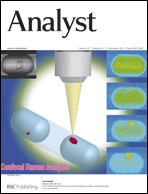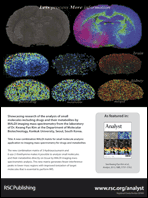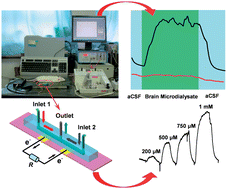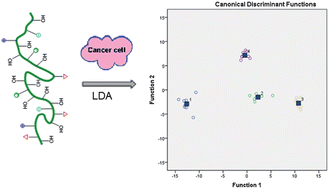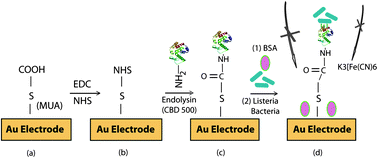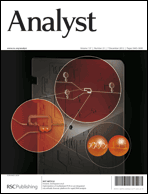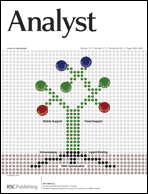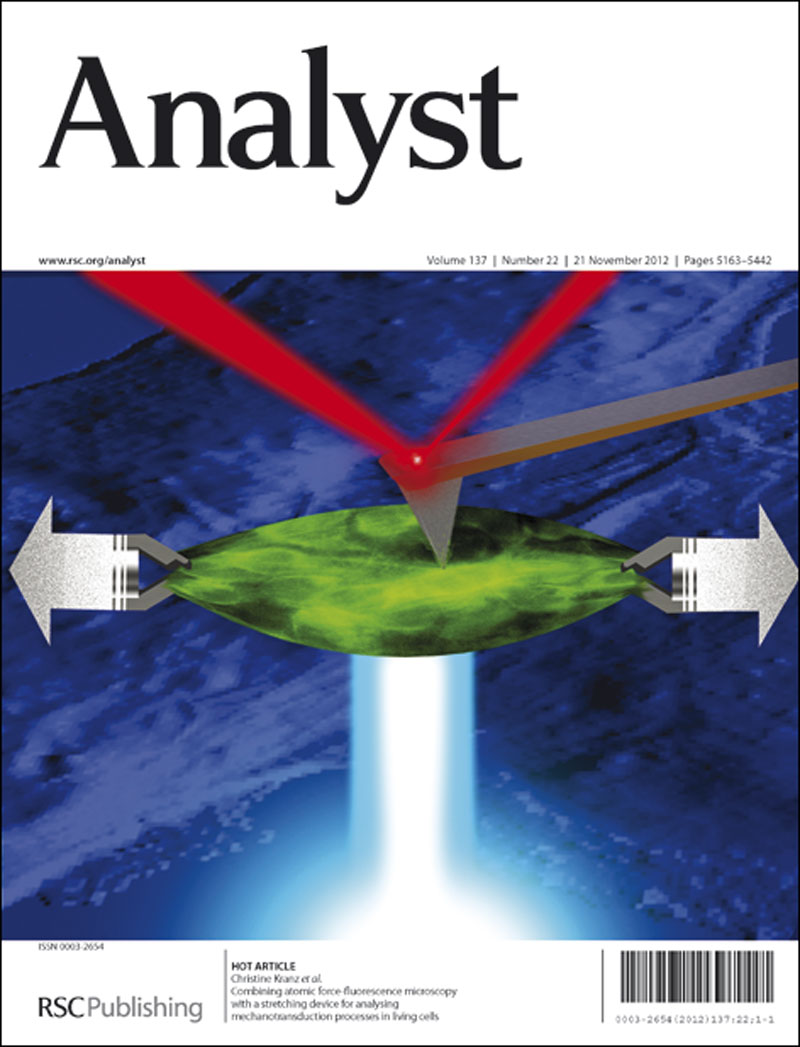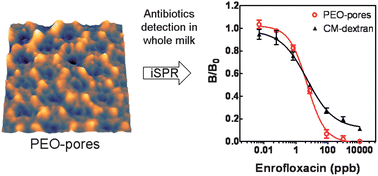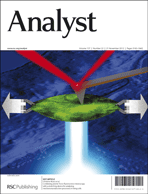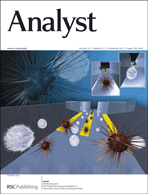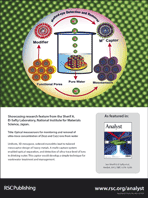Some wonderful covers in this latest issue of Analyst. The colourful outside front cover comes from Jacob Filik at Diamond Light Source Ltd., UK, who together with colleagues from the UK have prepared a study that demonstrates the use of standard morphological image processing techniques to reduce the hyperspectral image data of samples, containing discrete particles or domains, to a single average spectrum per particle.
Morphological analysis of vibrational hyperspectral imaging data
Jacob Filik, Abigail V. Rutter, Josep Sulé-Suso and Gianfelice Cinque
Analyst, 2012, 137, 5723-5729
DOI: 10.1039/C2AN35914F
The informative inside front cover comes from a team of scientists from Japan. Masaya Miyazaki from the National Institute of Advanced Industrial Science and Technology and colleagues has been imaging protein crystals deposited on a nanodroplet through the use of Raman spectroscopy. Acquiring a high quality protein crystal is important to be able to determine its structure. This is often the first step in novel drug design.
Three-dimensional Raman spectroscopic imaging of protein crystals deposited on a nanodroplet
Satoshi Nitahara, Masatoshi Maeki, Hiroshi Yamaguchi, Kenichi Yamashita, Masaya Miyazaki and Hideaki Maeda
Analyst, 2012, 137, 5730-5735
DOI: 10.1039/C2AN35942A
On the back cover we are showcasing research of the analysis of small molecules including drugs and their metabolites by MALDI imaging mass spectrometry from the laboratory of Kwang Pyo Kim at the Department of Molecular Biotechnology, Konkuk University, Seoul, South Korea
A new combination MALDI matrix for small molecule analysis: application to imaging mass spectrometry for drugs and metabolites
Selina Rahman Shanta, Tae Young Kim, Ji Hye Hong, Jeong Hwa Lee, Chan Young Shin, Kyun-Hwan Kim, Young Hwan Kim, Sang Kyung Kim and Kwang Pyo Kim
Analyst, 2012, 137, 5757-5762
DOI: 10.1039/C2AN35782H
These papers will be free to read for 6 weeks.



